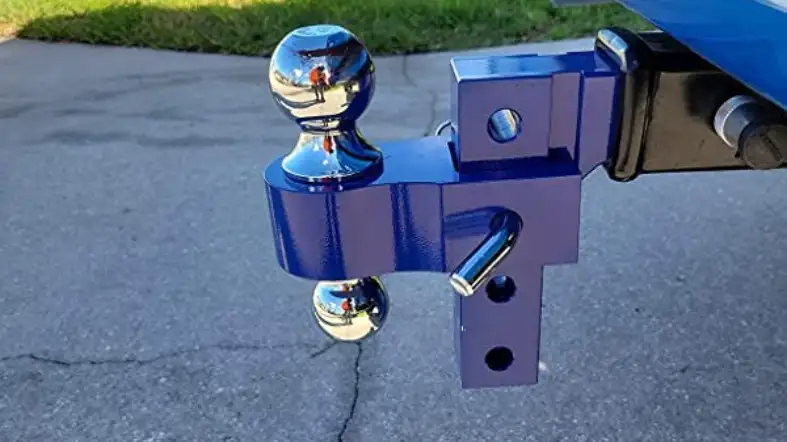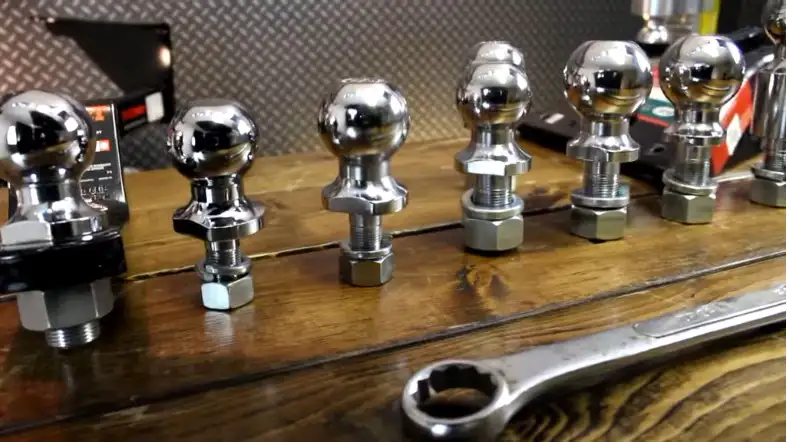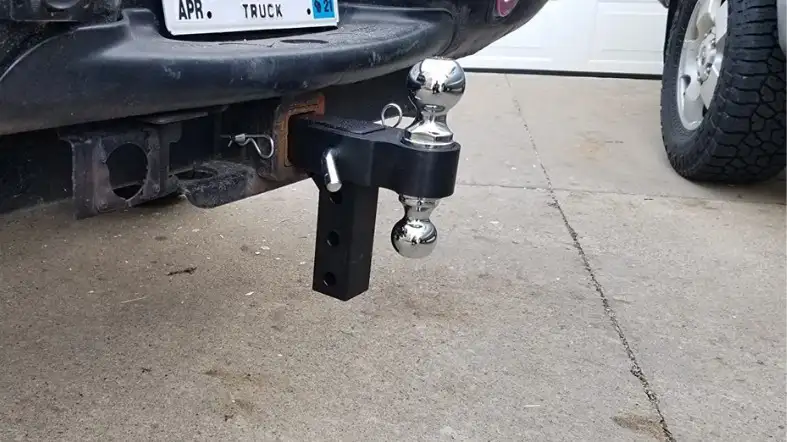A ball hitch is a coupling system that is typically used to connect your vehicle to a trailer or other towed load.
There are many different types of ball hitches available, and choosing the right one for your vehicle and needs can be a bit confusing.
In this guide, we will explore the different types of ball hitches, how does a ball hitch works, and maintain your ball hitch.
How does a ball hitch work?
A ball hitch works by:
1. Providing a connection point between a vehicle and a trailer or other towed object.
2. Using a ball-shaped component, typically made of steel or other durable material, that is mounted on the rear of the vehicle and protrudes from the bumper or hitch receiver.
3. Allowing the trailer or object to be attached using a coupler, which is a device that clamps onto the ball and securely holds the trailer in place.
4. Enabling the trailer or object to pivot and move with the vehicle as it turns or changes direction.
5. Absorbing some of the shock and vibration from the road to prevent damage to the trailer or object being towed.

6. Requiring a properly sized ball hitch, which is determined by the weight of the trailer or object being towed and the towing capacity of the vehicle.
7. Often featuring a locking mechanism to prevent the trailer from becoming detached while in use.
8. Providing a simple yet effective way to transport large or heavy items over long distances.
How do I choose the right ball hitch for my vehicle?
Here are given some tips to choose the right ball hitch for your vehicle:
1. Determine the towing capacity of your vehicle
The first step in choosing the right ball hitch for your vehicle is to determine the towing capacity of your vehicle.
The towing capacity is the maximum amount of weight that your vehicle can safely tow.
2. Select a ball hitch with a rating that meets
Once you know the towing capacity of your vehicle, you can select a ball hitch with a rating that meets or exceeds the towing capacity of your vehicle.
There are three main types of ball hitches, each with a different weight rating: Class I, Class II, and Class III.
Class I hitches have a weight rating of up to 2,000 pounds, Class II hitches have a weight rating of up to 4,000 pounds, and Class III hitches have a weight rating of up to 6,000 pounds.
3. Choose A Ball Hitch With The Right Shank Size For Your Vehicle

The shank is the portion of the hitch that inserts into the receiver on your vehicle.
It will be determined by the make and model of your vehicle.
4. Select a ball hitch with the desired features
Once you have considered the weight rating and shank size, you can then select a ball hitch with the desired features.
Some common features include adjustable height, swivel action, and locking pins.
5. Install the ball hitch on your vehicle
Once you have selected the perfect ball hitch for your needs, it is important to install it on your vehicle according to the manufacturer’s instructions.
Incorrect installation can result in serious injury or damage to your vehicle
Importance of a ball hitch for my vehicle
A ball hitch is one of the most versatile and important tools you can have for your vehicle.
Some of the importance is given below:
1. A ball hitch is an essential piece of equipment for any vehicle that will be used for towing.
2. A ball hitch provides a secure connection between the tow vehicle and the trailer, ensuring that the trailer does not become detached from the vehicle while in motion.
3. A ball hitch also allows for easy maneuvering of the trailer, as it can be turned in any direction without having to remove the hitch from the vehicle.
4. Ball hitches are available in a variety of sizes to accommodate different trailers and vehicles.
5. It is important to choose the right size ball hitch for your vehicle and trailer to ensure a safe and secure connection.
How Do I Properly Maintain My Ball Hitch?

You can these several steps to take care of your ball hitch:
1. Check the ball hitch before each use
Before using your ball hitch, it is important to check it for any damage or wear.
Inspect the ball and socket for any cracks, breaks, or other damage.
Also, make sure that the locking mechanism is secure and functioning properly.
2. Keep the ball hitch clean
It is also important to keep the ball hitch clean.
After each use, wipe down the ball and socket with a clean cloth.
If the hitch is particularly dirty, you can wash it with soap and water.
Be sure to dry it completely before storing it.
3. Store the ball hitch properly
When not in use, the ball hitch should be stored in a cool, dry place.
It is also important to keep the hitch away from direct sunlight, as this can cause the metal to deteriorate over time.
4. Periodically lubricate the ball hitch
To keep the ball hitch functioning properly, it is important to periodically lubricate it.
Use light oil or grease on the ball and socket, being careful not to get any on the surrounding area.
5. Inspect the ball hitch regularly for wear and tear
Even with proper care and maintenance, your ball hitch will eventually start to show signs of wear and tear.
Inspect it regularly for any cracks, breaks, or other damage.
If you notice any damage, replace the hitch immediately.
FAQs on How A Ball Hitch Works
What Safety Features Should I Look For When Choosing A Ball Hitch?
When choosing a ball hitch, it is important to look for features such as a locking mechanism, reinforced construction, and a weight capacity that meets your needs.
Additionally, consider purchasing a hitch with a built-in sway control system to improve stability during towing.
Can a ball hitch be used with any type of trailer?
Not all trailers are compatible with a ball hitch.
Some trailers, such as those with a fifth wheel connection, require a different type of hitch.
It is important to check the specifications of both the vehicle and the trailer to ensure the correct hitch is used.
How Do I Know If My Vehicle Is Compatible With A Ball Hitch?
One of the easiest ways to do this is by consulting your vehicle’s owner’s manual or contacting the manufacturer directly.
Another option is to take your vehicle to a local automotive store or service center for an assessment of its towing capabilities.
How Do I Install A Ball Hitch On My Vehicle?
To attach a trailer to a ball hitch, first, ensure that the coupler on the trailer is properly aligned with the ball on the hitch.
Once aligned, lower the coupler onto the ball and secure it in place with the locking mechanism.
Some couplers have a latch or pin that must be inserted into the ball hitch to lock it in place, while others may have a handle that is turned to lock the coupler onto the ball.
Final Words
When choosing and installing a ball hitch for your vehicle, it is important to know how a ball hitch works, the size, and weight of your vehicle, as well as the type of load you will be pulling.
By taking these factors into account and consulting with a professional before installing your new ball hitch, you can find the right fit for your vehicle and enjoy safe, easy towing for years to come.
